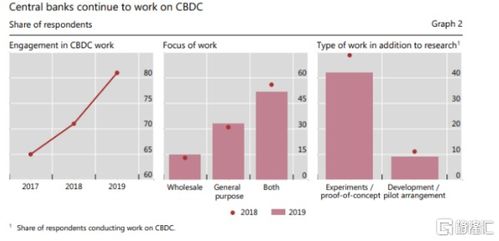South Africa, a nation historically synonymous with rich mineral deposits and deep-rooted mining traditions, is fast evolving into a formidable player in the digital economy of 2025, thanks primarily to its burgeoning mining hardware sector. This transformative shift from physical mineral extraction to the digital excavation of cryptocurrencies places the country’s mining machines at the heart of a rapidly expanding ecosystem. The surge in demand for mining rigs and hosting services encapsulates this digital metamorphosis, signaling a broader trend where crypto assets like Bitcoin (BTC), Ethereum (ETH), and Dogecoin (DOG) intertwine with infrastructure innovations to redefine economic contours.
Cryptocurrency mining, often viewed through the lens of individual miners wielding solitary machines, has escalated into a colossal industry characterized by sprawling mining farms backed by sophisticated hardware. In the South African context, mining rigs—custom-built to maximize hashing power and energy efficiency—serve as the backbone of these operations. Companies specializing in supplying state-of-the-art mining machines have begun tailoring solutions that are not just powerful but also optimized for local energy grids and climate conditions, providing a competitive edge in terms of sustainability and cost-effectiveness.

Hosting services for mining machines—where operators colocate hardware in data centers equipped with ideal cooling and power infrastructure—have become pivotal in South Africa’s crypto mining landscape. This approach minimizes maintenance concerns for individual miners, allowing them to focus exclusively on their digital currency portfolios. The rise of these mining farms, often strategically located in regions with access to renewable energy sources or lower electricity tariffs, amplifies South Africa’s potential as a sustainable hub, bucking the global trend of environmental criticism often levied at cryptocurrency mining sectors.
Bitcoin, maintaining its status as the pioneer and the dominant cryptocurrency, continues to fuel this expansion. South African miners deploy ASIC (Application-Specific Integrated Circuit) devices specifically engineered for Bitcoin’s SHA-256 algorithm, although multi-currency mining machines capable of toggling between coins like DOG and ETH have emerged with increasing popularity. This adaptability not only mitigates the volatility of individual crypto markets but also accelerates the adoption of altcoins, diversifying investment risks and stabilizing revenue streams within the mining community.

Ethereum’s ascent, propelled by its transition towards Ethereum 2.0 and the associated shift from Proof of Work (PoW) to Proof of Stake (PoS), poses both challenges and intriguing opportunities for mining hardware manufacturers and hosting operators. While traditional ETH miners face the inevitability of hardware redundancy post-shard integration, many are pivoting towards mining ETH alternatives or leveraging their rigs for other cryptocurrencies that still rely on PoW algorithms. This dynamic scenario encourages innovation in hardware design, promoting flexible architectures capable of sustaining profitability across fluctuating blockchain protocols.
Dogecoin, initially conceived as a meme-based currency, has garnered unexpected respectability within the mining milieu due to its Scrypt-based algorithm, which lends itself easily to mining alongside Litecoin. South African miners often deploy mining machines capable of synchronized multi-coin mining, capitalizing on the efficiency gains from parallel hash computations. The popularity of DOG, particularly amidst younger investors and online communities, complements the broader adoption trends and bolsters the overall crypto economy’s population diversity.
Exchanges play a critical symbiotic role in this environment. South Africa’s growing list of domestic and international crypto exchanges provides miners an instant gateway to liquidity and diversified trading options. The seamless execution of trades, backed by high-frequency exchange servers closely integrated with mining operations, underscores a fragmented but interconnected financial ecosystem destined to mature by 2025. This bridging role is integral for retail and institutional players alike, both unlocking new fiat-to-crypto corridors and facilitating advanced derivative products tied to mining revenues.
Moreover, the integration of blockchain technology into South Africa’s digital economy extends beyond mere currency mining. Decentralized finance (DeFi) platforms and non-fungible tokens (NFTs) leverage mining infrastructure security while demanding tailored solutions from hardware vendors, such as higher computational throughput and resilient uptime. This intersection leads to an unanticipated diversification of mining hardware use-cases, encouraging manufacturers and hosting services to innovate beyond traditional crypto-mining rigs.
In anticipation of 2025, strategic initiatives from government bodies and private enterprises are underway to underpin this digital transition. Incentives for green energy-powered mining setups and regulatory frameworks geared towards legitimizing crypto operations signal official acknowledgment of mining hardware’s pivotal role. These policies aim to attract foreign investments to bolster mining farms, increase local employment opportunities in high-tech sectors, and reduce dependency on conventional mineral exports, all aligning with South Africa’s broader economic diversification goals.
The convergence of cutting-edge mining rigs, sophisticated hosting solutions, and vibrant digital currency ecosystems portends a reshaped economic future for South Africa. The country’s commitment to optimizing hardware and energy efficiency, promoting environment-friendly mining farms, and nurturing an inclusive crypto community positions it as a potential powerhouse within the global digital economy by 2025. Whether through sustained Bitcoin dominance, Ethereum’s evolution, or Dogecoin’s cultural resonance, mining hardware serves as the essential catalyst in transforming digital wealth generation paradigms and embedding South Africa firmly in the blockchain-powered future.

This article offers a compelling exploration of how South Africa’s mining technology will significantly influence the digital economy by 2025. It delves into innovative mining hardware advancements, their sustainability impact, and potential to enhance data-driven industries, highlighting the intricate relationship between natural resources and technological progress.